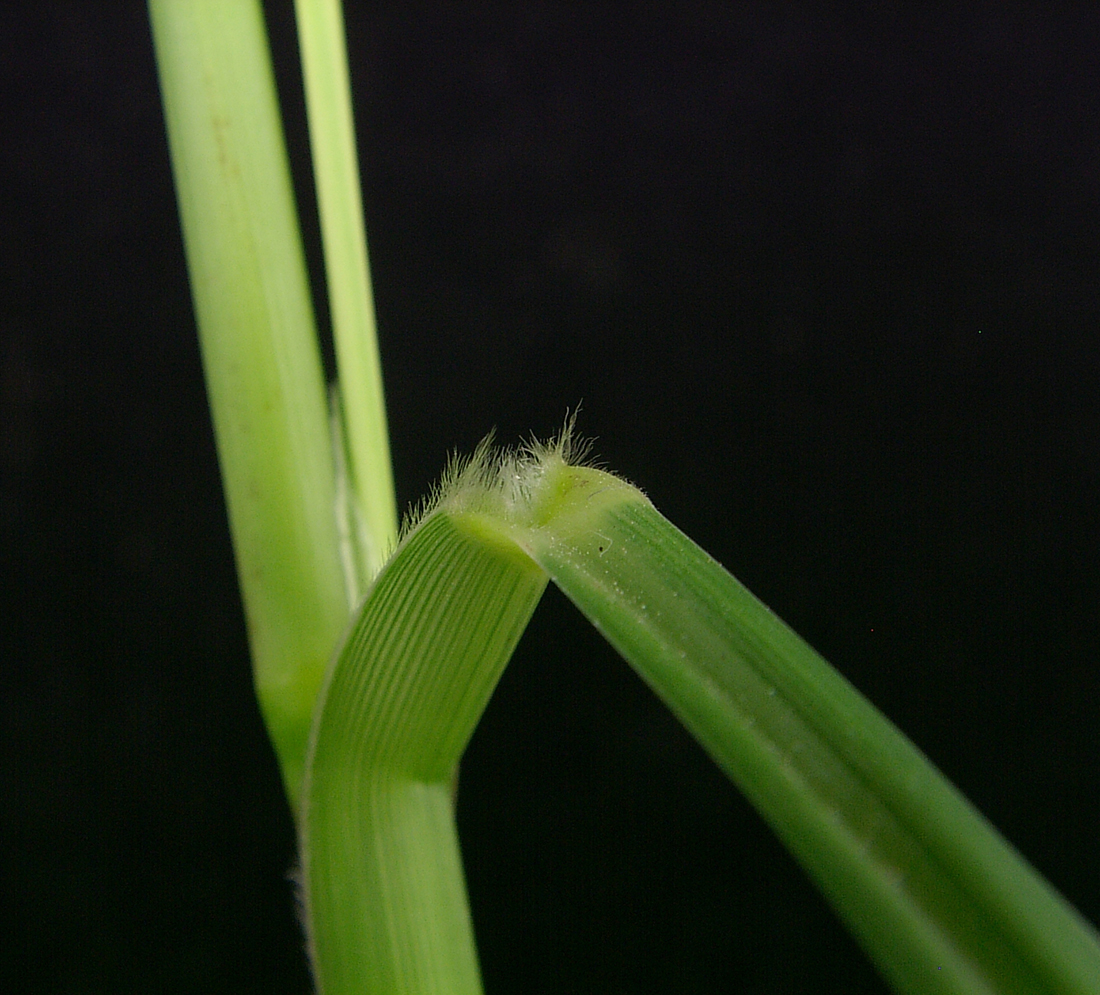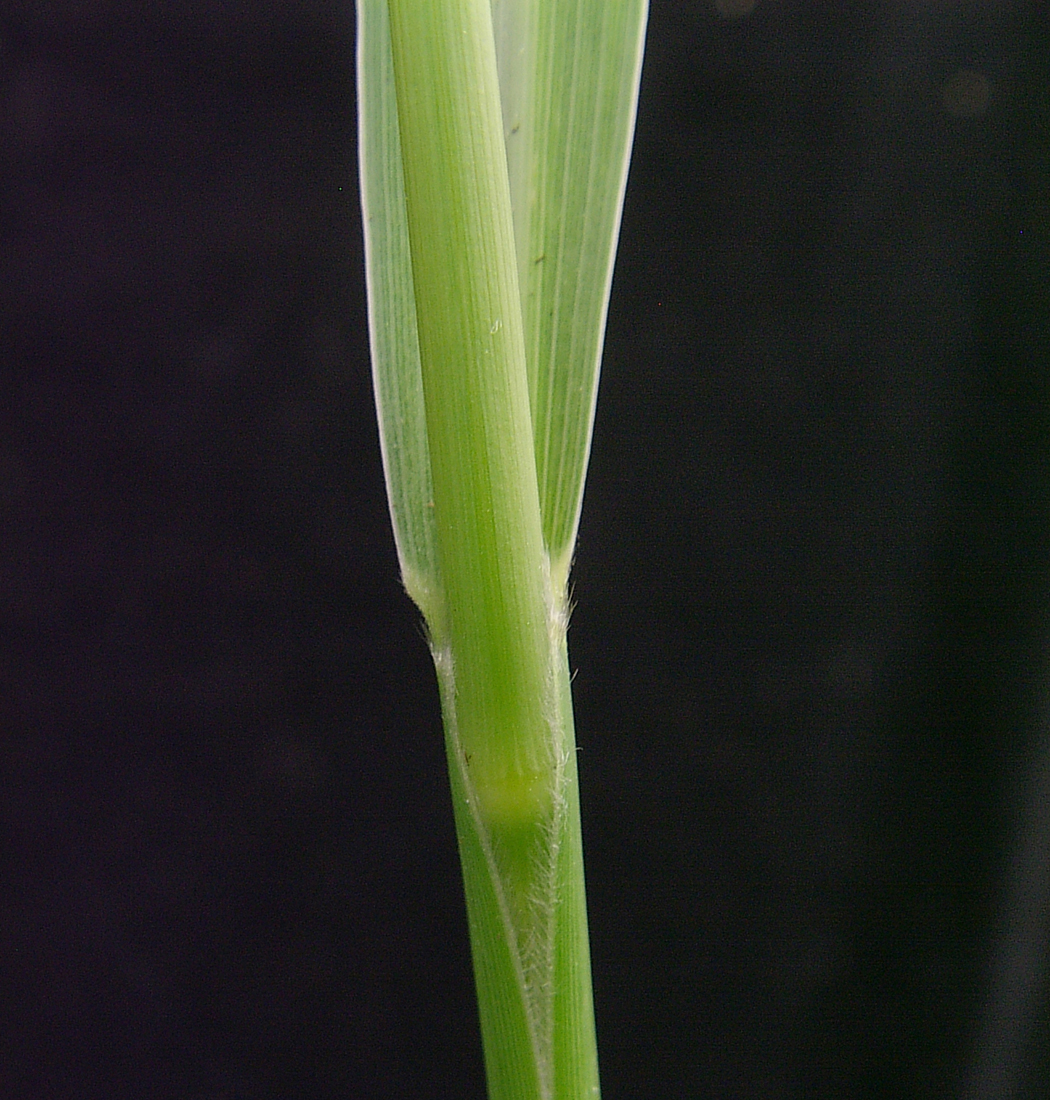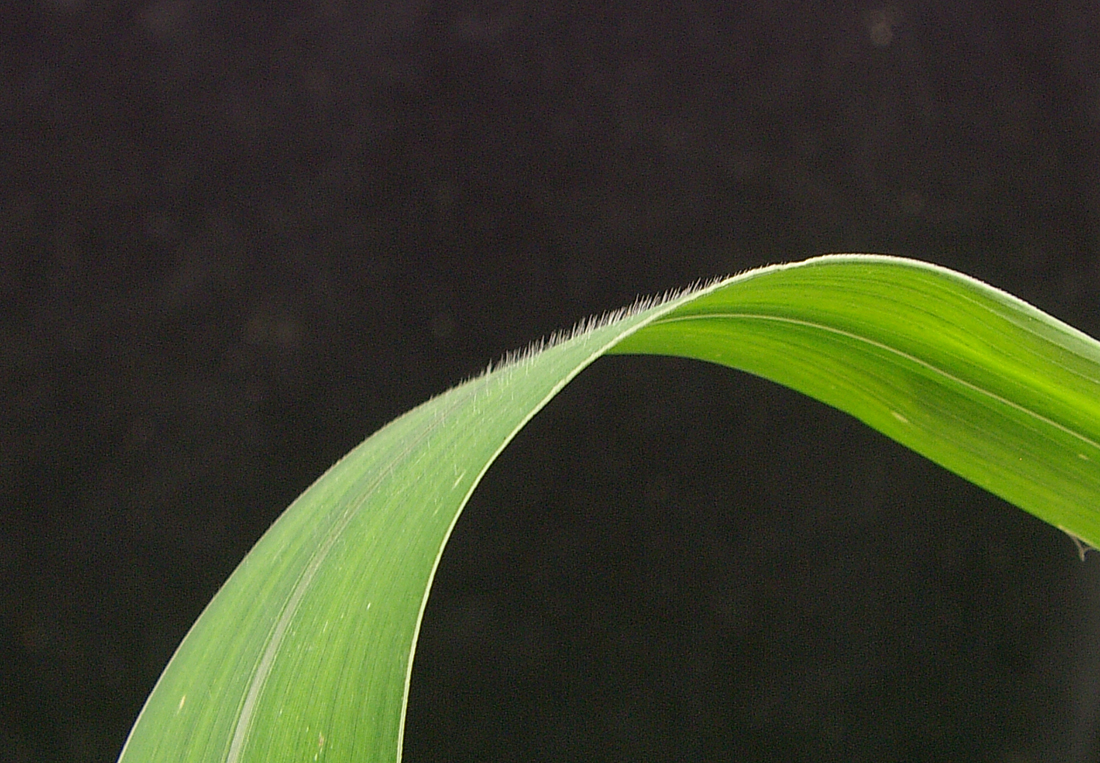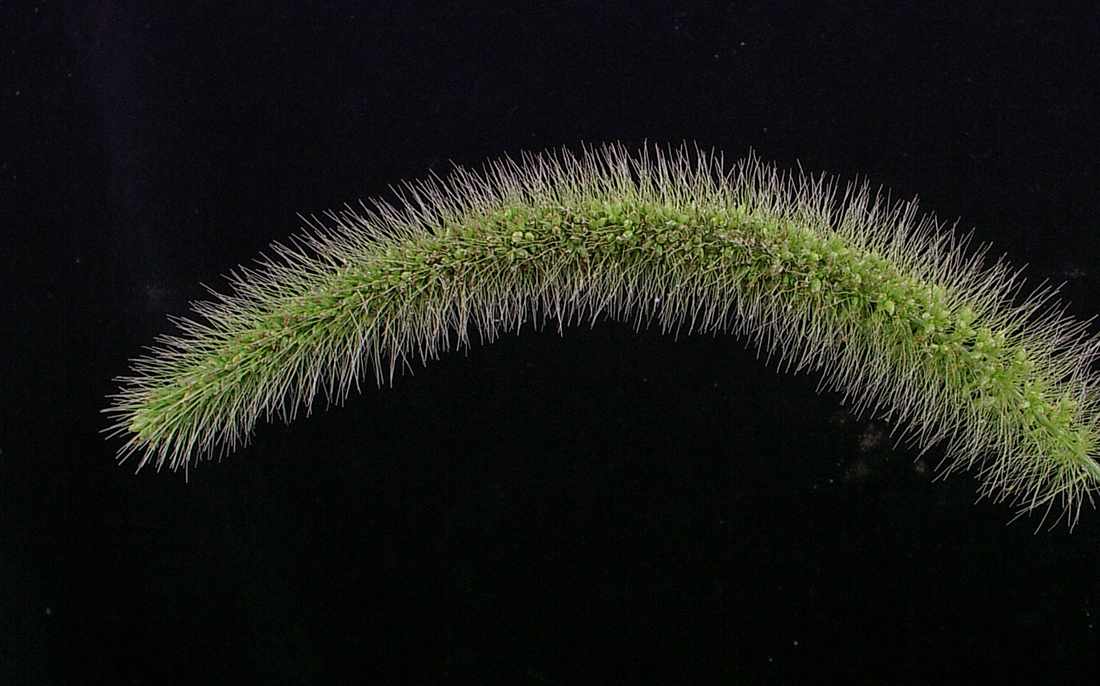Giant Foxtail
- Grass (Poaceae family):
- Setaria faberi R.A.W. Herrm.
- EPPO code:
- SETFA
- Other names:
- Bottle brush, bottle grass, bristle grass, millet, pigeon grass, wild millet
Species information
- Lifecycle:
- Annual.
- Propagation:
- Reproduces by seed.
- Emergence:
- Typically, giant foxtail is one of the first annual grass species to emerge in the spring. Usually, though, it emerges after broadleaf weeds, like lambs quarter and pigweed.
- Habitat:
- Although it can be found throughout the province, it is most commonly found in cultivated fields in southwestern Ontario.
- Competitiveness:
- Agriculture and Agri-Food Canada research has shown that yellow foxtail densities of 20,000 plants/ac can result in a 10–12% yield loss in corn and soybeans.
- Resistance:
- A number of populations are resistant to Group 2 (for example, imazethapyr) herbicides in Ontario.
Identification clues
- Auricles:
- None.
- Ligule:
- Hairy.
- Leaf blade:
- The upper surface of giant foxtail’s leaf blade is hairy, while the lower surface is hairless.
- Leaf sheath:
- The margins of the sheath are hairy.
- Stem:
- Round.
- Seed heads:
- Giant foxtail’s seed head is bristly and spiked. Typically, its seed head is twice the length of that of green foxtail.
- Roots:
- Fibrous.
Often mistaken for
I know it's not Fall panicum because giant foxtail’s leaf blade has a hairy upper surface and a hairy leaf sheath margin. Fall panicum, on the other hand, has neither.
I know it's not Green foxtail because the upper leaf blade surface of giant foxtail is hairy, while green foxtail’s is not.
I know it's not Large crabgrass because giant foxtail has a hairy ligule while that of large crabgrass is membranous.




Updated: January 13, 2023
Published: January 13, 2023